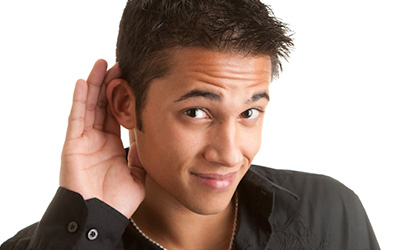



Sometimes there’s no greater gift you can give someone than offering a sympathetic ear.
A recent Student Health 101 survey indicates that almost 50 percent of students just want to be listened to during times of distress. Sometimes what people need most is the opportunity to talk. So how can you demonstrate that you’re really hearing what other people say?
Active listening refers to the goal of truly understanding what someone says. Facilitating a conversation where the speaker feels heard is a crucial part of good communication. “You can tell when someone is [actually] listening to you and not just waiting for his or her turn to speak,” says Heather T., a second-year student at Queen’s University in Kingston, Ontario. “It allows for a more genuine conversation.”
Dean M., a student at the University of Ontario Institute of Technology in Oshawa, suggests, “If you care about someone, show it.” Here are some basic techniques:
In the recent Student Health 101 survey, 20 percent of respondents ranked eye contact as the most important part of a conversation.
Hilary S., a fourth-year student at the University of Guelph in Ontario, agrees that your body conveys your attentiveness. She says, “Showing that you’re listening has a lot to do with your body language.”
The Centre for Teaching Excellence at the University of Waterloo in Ontario emphasizes the importance of body language in active listening. Try using the strategies below:
Do you know how to read body language and facial expressions? Take a quiz.
Effective communication combines welcoming body language with active listening skills. Practicing these helps ensure that not only do the people you speak with feel heard, but also that you get the most from conversations.
Heidi is a senior studying psychology at the University of Guelph.
Nonverbal Encouragement |
Purpose
Examples
|
Clarification |
Purpose
Examples
|
Paraphrasing |
Purpose
Examples
|
Summarizing |
Purpose
Examples
|




